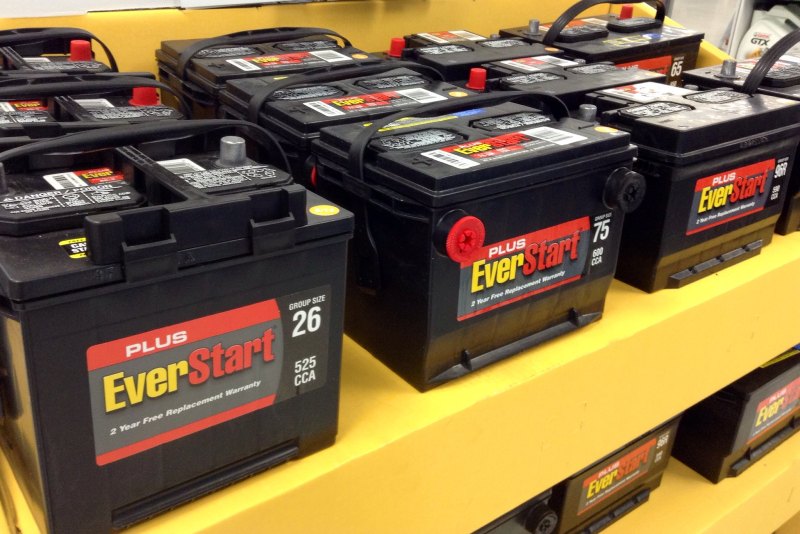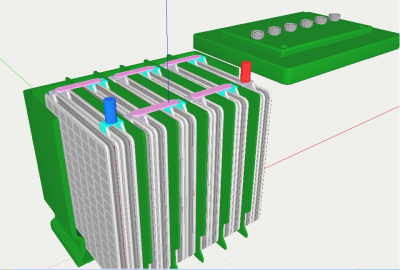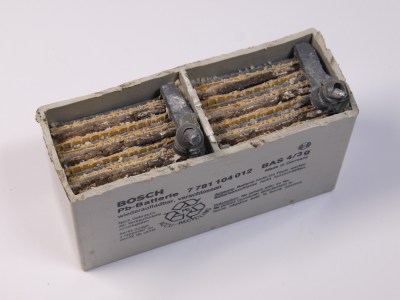
Working on car electrical systems used to be easy. The battery simply provided power for the car’s starter motor when starting or to run the small number of accessories when the engine wasn’t running. The rest of the time, the alternator charged the battery and provided power for the rest of the vehicle and the ignition system. While very early cars didn’t have batteries, and some old cars had 6 V positive ground systems, most of us have lived our entire lives where car batteries come in several sizes (controlled by Battery Council International) and cars have a 12 V, negative ground system.
Times have changed. Cars don’t have distributors anymore, they have computers. They also have lots of gadgets from GPS to backup cameras and cellphone chargers. Batteries have had to get beefier and the modern trend is to also require less maintenance So, today, you’ll find that there isn’t just one kind of car battery. But how do these other batteries work and what was wrong with the good old lead acid wet cell?
For the purposes of this post, I’m not talking about electric car batteries which is a whole different topic — and most of them have a regular car battery, too.
In the Realm of the Practical

These batteries are simple enough. Each cell has a grid with a lead-based alloy for the cathodes and lead oxide anodes sitting in sulfuric acid. A typical battery has six cells to get to 12.6V, and there was a cap that allowed the user to add water — preferably, distilled water — when needed and also would vent out hydrogen gas generated during charging.
Evaporation and Shedding
The scourge of all this is evaporation of the electrolyte battery. With old batteries, you could actually spill the contents. Battery operation also removes water. Heat can evaporate liquid. Less liquid means less surface area exposed to electrolyte which reduces the battery’s capabilities. It also can lead to sulfation, where the electrodes are coated with lead sulfate which weakens the battery and requires careful recharging.
However, the primary wear on this type of battery is how part of the material sheds lead sulfate during operation, which sinks to the bottom of the battery. Deep cycle batteries will have thicker plates and more room at the bottom for waste to accumulate. Eventually, if enough waste material accumulates at the bottom, the battery will fail.
Improvements
In the day when you had to check the water in the battery like checking the air in tires, there were additives like VX-6 that you could dump into the battery cells that used cadmium sulfate to prevent sulfation. At least, that was the claim that some disputed.
But clearly, you would like to have a battery that lasts forever and doesn’t require any maintenance. You can’t have everything, of course, but you can try. New alloys reduced the amount of water decomposed, so batteries can have enough liquid in them to last over their useful service life. That’s why most batteries today are sealed and only have vents for gas to escape during charging.
Enhanced flooded batteries were another innovation and managed to largely supplant conventional batteries. These use a polymer separator that is porous to electrolyte but prevents the plates from shorting together. These batteries last much longer than conventional batteries and have far greater tolerance to deep discharge.
Glass Tacks

The key innovation to AGM batteries is that the electrolyte isn’t a liquid. Instead, it is held in a fiberglass mat woven from very thin glass fibers. During manufacturing, the mats are soaked in acid, wrung out to remove excess liquid, and then installed in the battery where they keep sufficient acid in contact with the electrodes for the life of the battery.
AGM batteries require little maintenance and, unlike liquid batteries, can operate in any orientation. This is especially important in all-terrain vehicles and motorcycles where the battery may be tipped or flipped. They also emit less hydrogen gas which makes them safer. They do not require any periodic maintenance, but they may or may not last longer than a properly maintained conventional battery. Note, though, that if you don’t maintain the normal battery properly, all bets are off. Then again, overcharging is harder on AGMs.
While a mat seems to imply a flat pad-like structure, AGM mats can be rolled or put in other configurations depending on the battery. For example, below you can see a comparison of a conventional battery and a spiral AGM battery. Another option for semi-solid electrolytes is the gel cell, but you don’t see these often in automotive applications because the gelled sulphuric acid doesn’t perform well at colder temperatures.
There are ways to fix some types of problems in unsealed batteries, some of which involve big voltage spikes. Thomas Edison liked using nickel-iron batteries in his electric car, and there may be a bit of a revival of this technology in some cases, too.
Featured image: “Walmart EverStart Car Batteries, Battery” by Mike Mozart
0 Commentaires